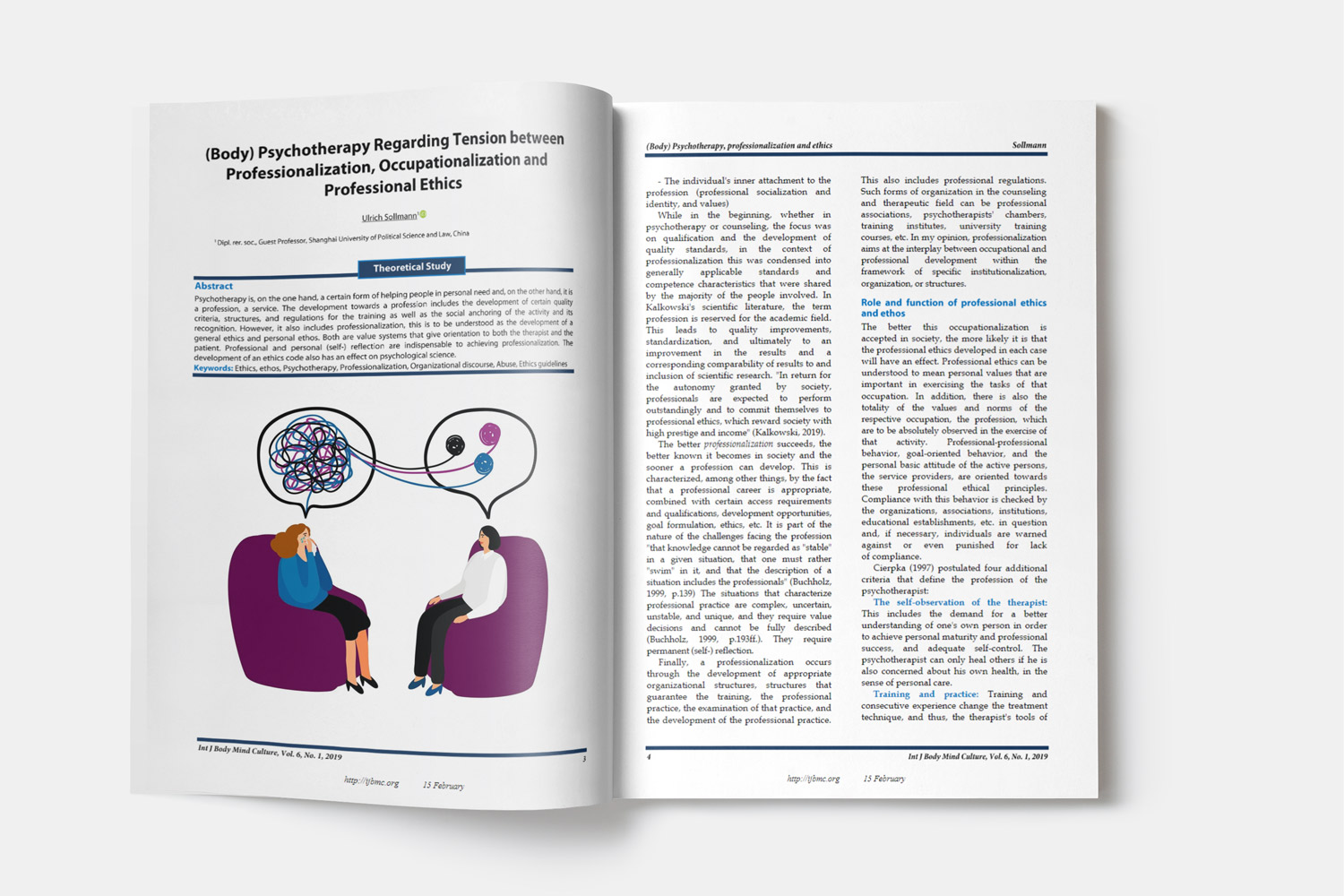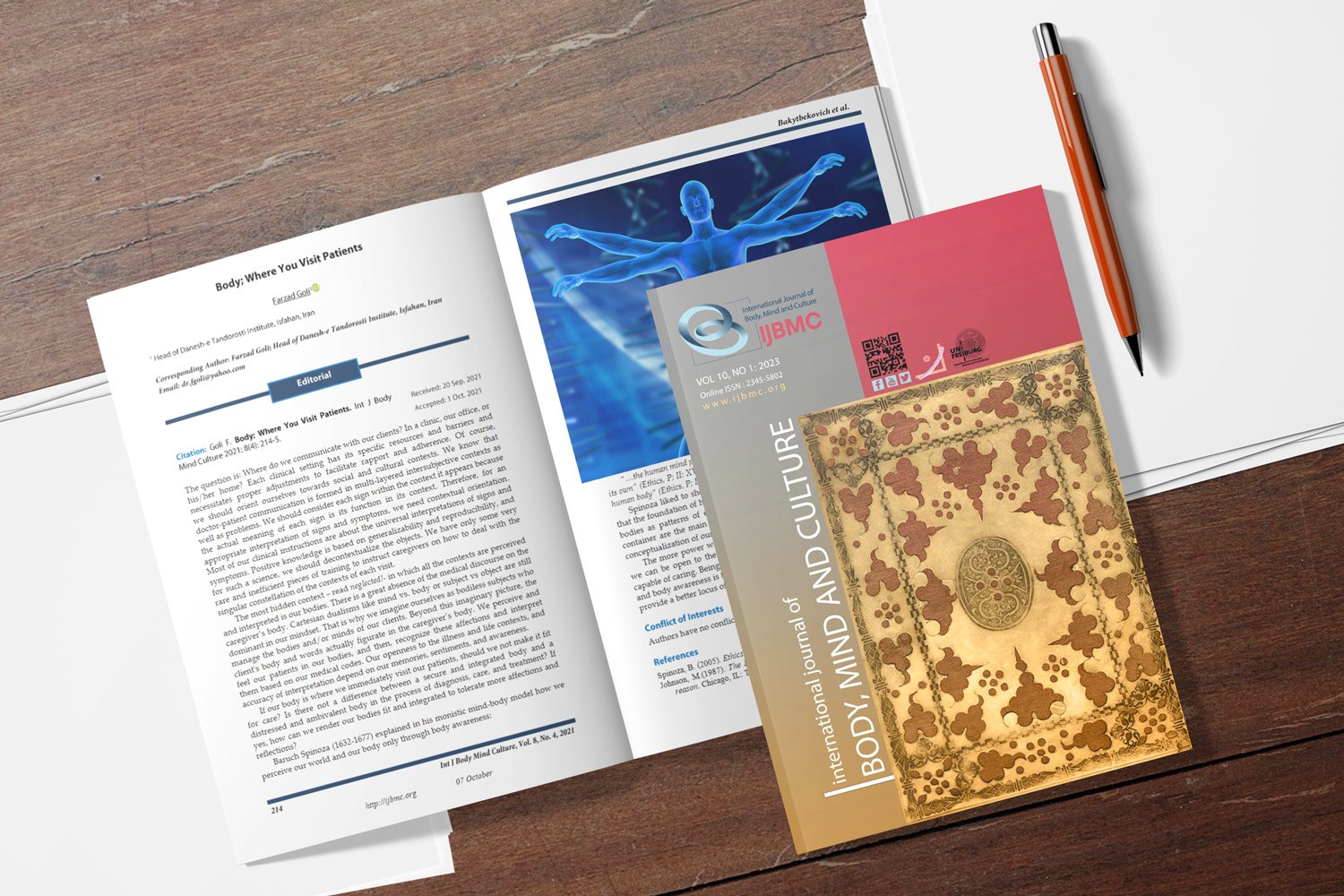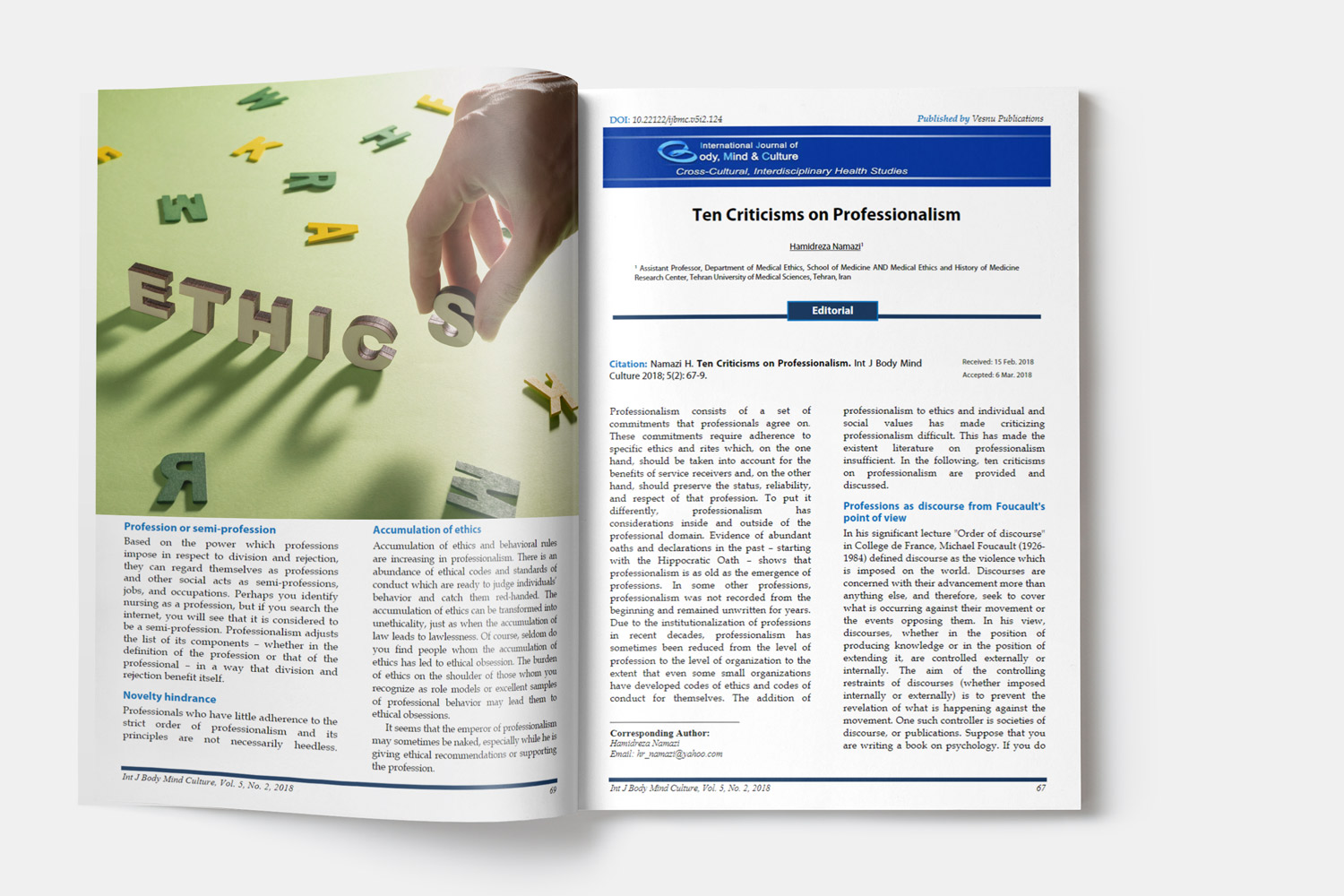Exploring the Predictive Role of Body Image and Rumination on Somatic Symptom Severity: A Quantitative Analysis
Downloads
Background: This study aimed to quantitatively assess the impact of body image dissatisfaction and rumination on the burden of somatic symptoms among adults.
Methods: A cross-sectional study design was employed with a sample of 330 participants who completed standardized measures assessing somatic symptoms, body image dissatisfaction, and rumination. Data were analyzed using linear regression in SPSS to explore the predictive value of body image and rumination on somatic symptom severity.
Results: The regression model accounted for 40% of the variance in somatic symptom severity, indicating that both body image dissatisfaction and rumination are significant predictors of somatic symptom burden.Specifically, rumination showed a positive correlation, while body image dissatisfaction had a negative correlation with somatic symptom severity
Conclusion: The findings suggest that psychological factors, particularly body image dissatisfaction and rumination, play a significant role in the manifestation and severity of somatic symptoms. Addressing these psychological aspects could be crucial in the management and treatment of somatic symptom disorders.
Downloads
Alikhah, S., Akbari, B., & Abolghasemi, A. (2023). The effectiveness of acceptance and commitment approach on quality of life and body image in patients with skin disorders by modulating emotional reactivity. Journal of Adolescent and Youth Psychological Studies (JAYPS), 4(7), 88-97. doi:10.61838/kman.jayps.4.7.10 [doi]
Amirkhanloo, A., Doosti, Y., & Donyavi, R. (2022). The comparison of the effectiveness of cognitive-behavioral therapy with emotional intelligence training on social adjustment in adolescents with conduct disorder. Applied Family Therapy Journal (AFTJ), 3(4), 217-242. doi:10.61838/kman.aftj.3.4.13 [doi]. Retrieved from https://doi.org/10.61838/kman.aftj.3.4.13
Askari Masuleh, S., & Taheri, F. (2023). Predicting organizational commitment by rumination. KMAN Counseling & Psychology Nexus, 1(2), 127-133. doi:10.61838/kman.psychnexus.1.2.20 [doi]
Azizi, M., FarokhSiri, Y., Kazemi Bahmanabad, F., & Zamani, Z. (2023). The effectiveness of mindfulness-based group therapy on controlling rumination and difficulty in regulating emotions in adolescents with obsessive-compulsive disorder. Rooyesh-e- Ravanshenasi, 12(2), 219-228.
Babakhanlou, A., & Babakhanlou, Z. (2024). The mediating role of body self-concept in the relationship between self-compassion and emotional eating in individuals with obesity. International Journal of Education and Cognitive Sciences, 4(4), 52-62. doi:10.61838/kman.ijecs.4.4.6 [doi]
Benjet, C., Zainal, N. H., Albor, Y., Alvis-Barranco, L., Carrasco-Tapias, N., Contreras-Ibanez, C. C. et al. (2023). A Precision treatment model for internet-delivered cognitive behavioral therapy for anxiety and depression among university students: A secondary analysis of a randomized clinical trial. JAMA Psychiatry, 80(8), 768-777. doi:2805591 [pii];yoi230037 [pii];10.1001/jamapsychiatry.2023.1675 [doi]. Retrieved from PM:37285133
Van den Bergh, O., Witthoft, M., Petersen, S., & Brown, R. J. (2017). Symptoms and the body: Taking the inferential leap. Neurosci Biobehav.Rev, 74(Pt A), 185-203. doi:S0149-7634(16)30472-9 [pii];10.1016/j.neubiorev.2017.01.015 [doi]. Retrieved from PM:28108416
Cohen, P. E., Sufrinko, A., Elbin, R. J., Collins, M. W., Sinnott, A. M., & Kontos, A. P. (2020). Do Initial symptom factor scores predict subsequent impairment following concussion? Clin J Sport Med, 30 Suppl 1(Suppl 1), S61-S68. doi:00042752-202003001-00008 [pii];10.1097/JSM.0000000000000581 [doi]. Retrieved from PM:32132479
Dondzilo, L., Basanovic, J., Grafton, B., Bell, J., Turnbull, G., & MacLeod, C. (2023). A serial mediation model of attentional engagement with thin bodies on body dissatisfaction: The role of appearance comparisons and rumination. Curr Psychol, 42(3), 1896-1904. doi:10.1007/s12144-021-01574-1 [doi]. Retrieved from https://doi.org/10.1007/s12144-021-01574-1
Engelmann, P., Lowe, B., Brehm, T. T., Weigel, A., Ullrich, F., Addo, M. M. et al. (2022). Risk factors for worsening of somatic symptom burden in a prospective cohort during the COVID-19 pandemic. Front.Psychol, 13, 1022203. doi:10.3389/fpsyg.2022.1022203 [doi]. Retrieved from PM:36337508
Fresco, D. M., Roy, A. K., Adelsberg, S., Seeley, S., Garcia-Lesy, E., Liston, C. et al. (2017). Distinct functional connectivities predict clinical response with emotion regulation therapy. Front.Hum.Neurosci, 11, 86. doi:10.3389/fnhum.2017.00086 [doi]. Retrieved from PM:28316567
Harding, K. A., Murphy, K. M., & Mezulis, A. (2015). Cognitive mechanisms reciprocally transmit vulnerability between depressive and somatic symptoms. Depress.Res Treat., 2015, 250594. doi:10.1155/2015/250594 [doi]. Retrieved from PM:26783455
Henry, M., Albert, J. G., Frenkiel, S., Hier, M., Zeitouni, A., Kost, K. et al. (2022). body image concerns in patients with head and neck cancer: a longitudinal study. Front.Psychol, 13, 816587. doi:10.3389/fpsyg.2022.816587 [doi]. Retrieved from PM:35401366
Kroenke, K., Johns, S. A., Theobald, D., Wu, J., & Tu, W. (2013). Somatic symptoms in cancer patients trajectory over 12 months and impact on functional status and disability. Support.Care Cancer, 21(3), 765-773. doi:10.1007/s00520-012-1578-5 [doi]. Retrieved from PM:22941116
Lowe, B., Andresen, V., Van den Bergh, O., Huber, T. B., von dem, K. O., Lohse, A. W. et al. (2022). Persistent SOMAtic symptoms ACROSS diseases - from risk factors to modification: scientific framework and overarching protocol of the interdisciplinary SOMACROSS research unit (RU 5211). BMJ.Open, 12(1), e057596. doi:bmjopen-2021-057596 [pii];10.1136/bmjopen-2021-057596 [doi]. Retrieved from PM:35063961
Mehdi Abadi, P. (2023). Exploring the Role of Family Relationships in Shaping Body Image Perceptions. KMAN Counseling & Psychology Nexus, 1(2), 17-23. doi:10.61838/kman.psychnexus.1.2.4 [doi]. Retrieved from https://doi.org/10.61838/kman.psychnexus.1.2.4
Milde, C., Glombiewski, J. A., Wilhelm, M., & Schemer, L. (2023). Psychological factors predict higher odds and impairment of post-COVID symptoms: A prospective study. Psychosom.Med, 85(6), 479-487. doi:00006842-990000000-00124 [pii];10.1097/PSY.0000000000001214 [doi]. Retrieved from PM:37199433
Nesterko, Y., Jackle, D., Friedrich, M., Holzapfel, L., & Glaesmer, H. (2020). Factors predicting symptoms of somatization, depression, anxiety, post-traumatic stress disorder, self-rated mental and physical health among recently arrived refugees in Germany. Confl.Health, 14, 44. doi:291 [pii];10.1186/s13031-020-00291-z [doi]. Retrieved from PM:32670398
Parsons, H. A., Baracos, V. E., Dhillon, N., Hong, D. S., & Kurzrock, R. (2012). Body composition, symptoms, and survival in advanced cancer patients referred to a phase I service. PLoS One, 7(1), e29330. doi:PONE-D-11-09205 [pii];10.1371/journal.pone.0029330 [doi]. Retrieved from PM:22235285
Saban, K. L., Griffin, J. M., Urban, A., Janusek, M. A., Pape, T. L., & Collins, E. (2016). Perceived health, caregiver burden, and quality of life in women partners providing care to Veterans with traumatic brain injury. J Rehabil.Res Dev, 53(6), 681-692. doi:JRRD-2015-07-0143 [pii];10.1682/JRRD.2015.07.0143 [doi]. Retrieved from PM:27997670
Wolters, C., Gerlach, A. L., & Pohl, A. (2022). Interoceptive accuracy and bias in somatic symptom disorder, illness anxiety disorder, and functional syndromes: A systematic review and meta-analysis. PLoS One, 17(8), e0271717. doi:PONE-D-21-06897 [pii];10.1371/journal.pone.0271717 [doi]. Retrieved from PM:35980959
Zolotareva, A. (2022). Cyberchondria, but not preventive behavior, mediates the relationship between fear of COVID-19 and somatic burden: Evidence from Russia. Front.Psychiatry, 13, 1018659. doi:10.3389/fpsyt.2022.1018659 [doi]. Retrieved from PM:36226097
Copyright (c) 2024 International Journal of Body, Mind and Culture

This work is licensed under a Creative Commons Attribution-NonCommercial 4.0 International License.















